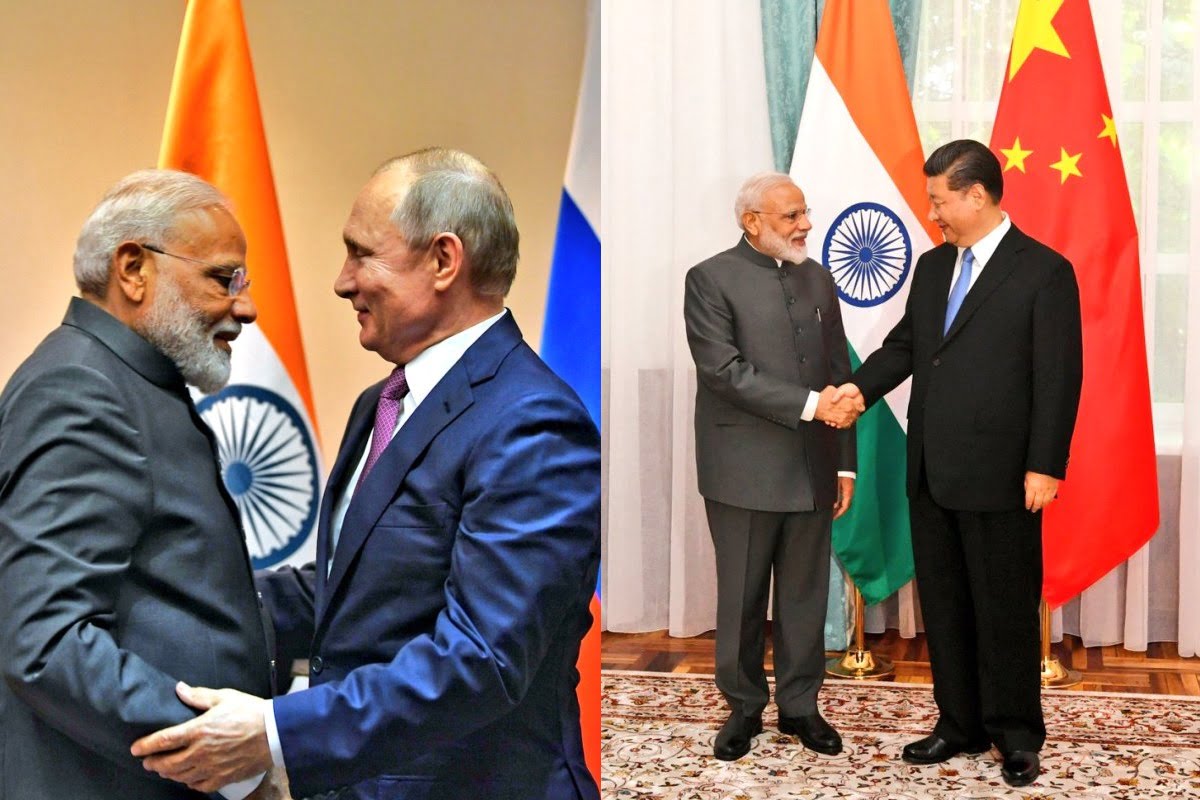Speculation surrounding the possibility of a robust alliance between India-China-Russia has sparked intense debates among geopolitical analysts worldwide. Although the realization of such an alliance remains uncertain, contemplating its potential implications provides valuable insights into the hypothetical shifts in global dynamics.
If materialized, this alliance could have profound implications for the balance of power in the international arena, potentially reshaping the dynamics of global politics, economics, and security. The hypothetical convergence of these three major powers presents a compelling scenario, suggesting a significant turning point in contemporary geopolitics. Through an examination of potential outcomes, we can uncover both the opportunities and challenges that such an alliance could pose on the world stage.
Here are some potential implications that underscore the far-reaching impact of such an alliance:
Shift in Global Power Dynamics: A strong alliance between India-China-Russia would create a formidable geopolitical bloc challenging the dominance of Western powers, particularly the United States and its allies. This could lead to a multipolar world order, with power being more evenly distributed among multiple major players.
Economic Collaboration: The combined economic might of India-China-Russia would create a massive market and production base. Increased trade and investment among these countries could boost economic growth and development in the region, potentially rivaling or even surpassing Western economies.
Geopolitical Influence: Together, these countries would have significant influence over global affairs, particularly in Asia and Eurasia. They could collaborate on regional initiatives, infrastructure projects, and security arrangements, shaping the geopolitical landscape in their favor.
Military Strength: A military alliance between India-China-Russia would create one of the most powerful military blocs in the world. This could deter aggression from other countries and provide a counterbalance to the military capabilities of Western alliances like NATO.
Challenges and Differences: Despite potential benefits, there would likely be challenges in maintaining such an alliance due to historical tensions and competing interests among the member countries. India and China, for example, have longstanding border disputes, while Russia’s relations with China have been complex, balancing cooperation and competition.
Regional Dynamics: The alliance could reshape regional dynamics, potentially leading to realignments among other countries in Asia and beyond. Traditional allies of the United States might reassess their relationships, and smaller countries could face pressure to choose sides in a more polarized world.
Global Governance: The alliance could seek to influence global governance structures and institutions, advocating for reforms that reflect the interests of emerging powers. This could lead to shifts in international norms and policies on issues such as trade, climate change, and human rights.
Energy Cooperation: Russia is one of the world’s largest energy exporters, while China and India are among the largest energy consumers. A strategic alliance could facilitate energy cooperation, including the development of pipelines, joint ventures in oil and gas exploration, and agreements on energy pricing and supply security.
Infrastructure Development: With their combined resources, the alliance could undertake ambitious infrastructure projects, such as building transportation networks, energy pipelines, and telecommunications systems across Asia and Eurasia. This could enhance connectivity and trade among member countries while also boosting economic development in less developed regions.
Cultural Exchange and Soft Power: The alliance could promote cultural exchange programs, language education, and tourism initiatives to foster mutual understanding and strengthen ties among their populations. This could enhance their soft power and influence beyond traditional geopolitical means.
Technological Collaboration: India, China, and Russia have significant technological capabilities across various sectors, including aerospace, information technology, and defense. Collaboration in research and development could lead to innovation breakthroughs, technological transfers, and joint ventures, enhancing their competitiveness on the global stage.
Regional Stability: By working together, the alliance could play a more active role in resolving conflicts and promoting stability in regions such as Central Asia, the Middle East, and Southeast Asia. This could involve diplomatic efforts, peacekeeping operations, and support for conflict resolution mechanisms.
Environmental Cooperation: Given their large populations and industrial bases, India, China, and Russia face significant environmental challenges, including pollution, deforestation, and climate change. A strong alliance could facilitate cooperation on environmental protection, clean energy initiatives, and sustainable development projects to address these shared concerns.
Security Guarantees: The alliance could provide mutual security guarantees and collective defense mechanisms to deter external threats and ensure the sovereignty and territorial integrity of member states. This could include joint military exercises, intelligence sharing, and coordinated responses to security challenges in their respective regions.
More from NewsBuzz1 – America’s Darkest Hour in Vietnam

